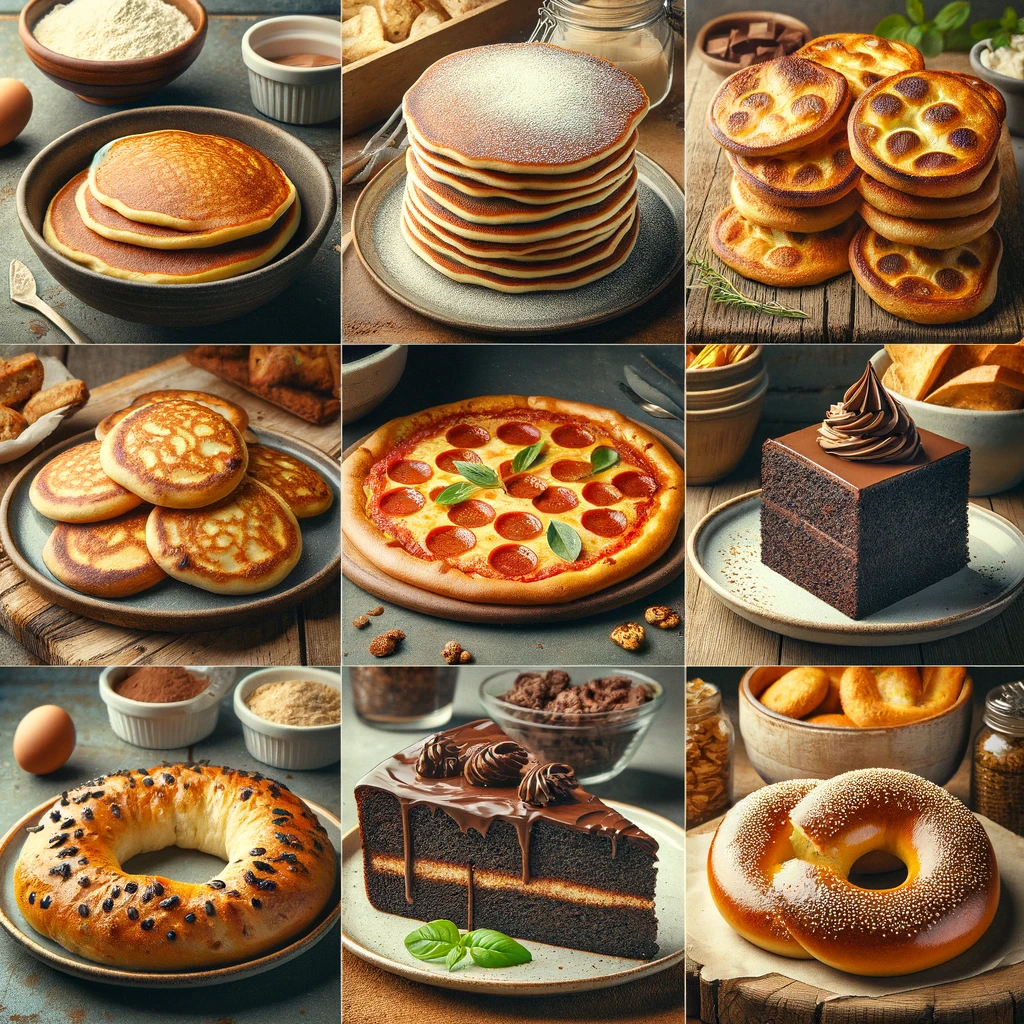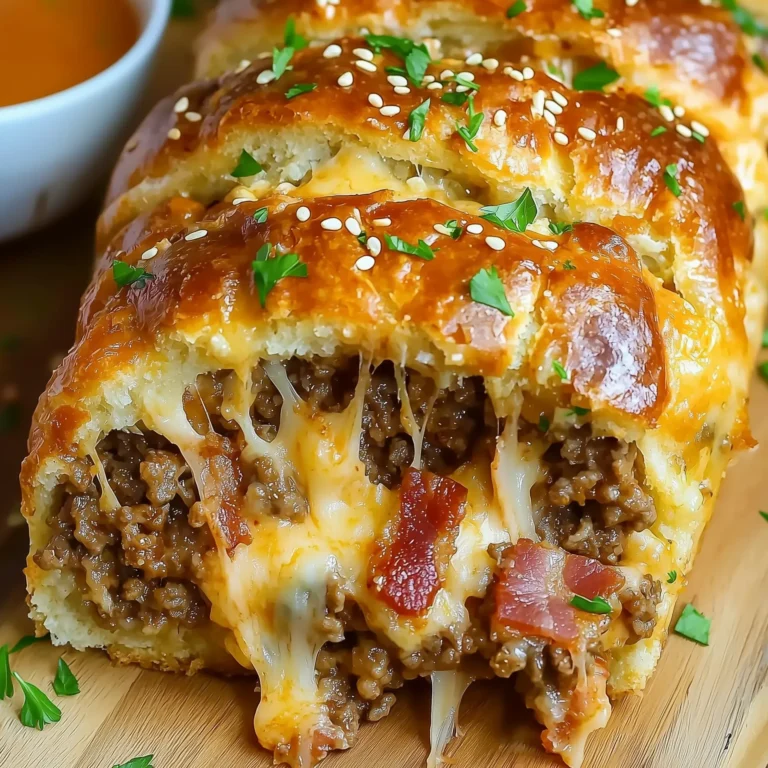Follow Me On Social Media!

Introduction to Sourdough Discard:
In the world of Sourdough Discard baking, one person’s discard is another’s secret ingredient. “Unlocking the Potential of Sourdough Discard: A Guide to Innovative Recipes” is more than just a title; it’s an invitation to explore the uncharted territories of your kitchen. Sourdough discard, often overlooked or, worse, thrown away, holds untold culinary potential that harmonizes sustainability with flavor.

Sourdough discard might seem like an odd ingredient to those unfamiliar with the sourdough baking process. However, it’s a byproduct that many bakers come to cherish for its versatility and unique tangy flavor. Sourdough discard is essentially the portion of your sourdough starter that you remove before feeding it with fresh flour and water. This practice keeps the starter at a manageable size and maintains its health and vigor for leavening bread.
But why throw away something that can be transformed into delicious recipes? The beauty of sourdough discard lies in its fermentation. Even in its discarded form, it contains a blend of wild yeast and beneficial bacteria. This not only imparts a distinct sourdough tang to various dishes but also offers a subtle complexity that enhances flavors in a way commercial yeast cannot.
Integrating sourdough discard into recipes is an excellent way to reduce food waste and explore new culinary territories. Whether you’re making pancakes, crackers, or even cakes, sourdough discard can add depth and character to your creations. It’s a testament to the philosophy that in cooking, creativity knows no bounds. By valuing every ingredient, including what might be considered waste, we can unlock a world of flavors and textures previously unimagined.
The transition from viewing sourdough discard as waste to seeing it as a prized kitchen staple marks a significant shift in how we approach food and baking. This article aims to guide you through that transformation, offering insights, recipes, and inspiration for utilizing your sourdough discard to its fullest potential. So, let’s embark on this journey together, exploring the innovative ways sourdough discard can elevate our cooking and contribute to a more sustainable kitchen.
The Benefits of Using Sourdough Discard:

In the journey of sustainable baking, sourdough discard stands out as a versatile and flavorful ingredient that can significantly reduce kitchen waste. But its benefits extend far beyond just sustainability. Using sourdough discard in recipes not only enriches the flavor profile of your dishes but also contributes to a more nutritious meal.
- Enhanced Flavor Profiles
Sourdough discard adds a unique tang and depth to recipes, introducing a new dimension of taste that can’t be replicated with fresh dough or commercial yeasts. This subtle complexity elevates everyday recipes, transforming them into gourmet experiences. Whether you’re baking bread, pancakes, or even savory dishes, incorporating sourdough discard will surprise and delight your taste buds.
- Reduced Kitchen Waste
In a world where food waste is a growing concern, using every bit of your ingredients is a practice in mindfulness and sustainability. Sourdough discard, often seen as a byproduct of sourdough maintenance, embodies this principle. Instead of throwing it away, repurposing discard in various recipes aligns with the ethos of zero-waste cooking, making the most of what you already have.
- Nutritional Benefits
Sourdough fermentation not only imparts unique flavors but also has nutritional advantages. The lactic acid bacteria present in sourdough discard can improve the digestibility of meals, making nutrients more accessible. Furthermore, this fermentation process can reduce the phytic acid content in flour, which in turn allows for better absorption of minerals.
- Versatility in Recipes
From sweet to savory, breakfast to dessert, sourdough discard’s versatility is unmatched. It can be used in a myriad of recipes, ensuring that bakers of all levels can find creative ways to incorporate it into their cooking. This adaptability makes sourdough discard an invaluable ingredient in the kitchen, capable of enhancing a wide range of dishes.
- Cultivating a Culture of Innovation
Using sourdough discard encourages culinary creativity and experimentation. It challenges bakers to rethink their approach to ingredients, pushing the boundaries of traditional recipes. This spirit of innovation not only leads to delicious outcomes but also fosters a deeper connection with the food we prepare and consume.
Sourdough Discard Basics:

Embracing sourdough discard as a kitchen staple requires understanding its basics—from how to handle and store it to preparing it for use in your favorite recipes. This foundational knowledge ensures that you can make the most of sourdough discard, minimizing waste and maximizing flavor in every dish you create.
- Handling Sourdough Discard
When it comes to handling sourdough discard, timing is everything. The discard should be collected from your sourdough starter during the feeding process, just before you add fresh flour and water. This ensures that the discard contains a balanced mix of fermentation byproducts, which contribute to its unique flavor and leavening properties.
- Storing Sourdough Discard
Proper storage is crucial for maintaining the quality of your sourdough discard. For short-term storage (up to a week), keep the discard in an airtight container in the refrigerator. This slows down fermentation and preserves its characteristics. For longer storage, sourdough discard can be frozen. Freeze in small, manageable portions for easy thawing and use in recipes. Be sure to label the container with the date, so you can keep track of freshness.
- Preparing Discard for Recipes
Before incorporating sourdough discard into recipes, let it come to room temperature, especially if it has been refrigerated or frozen. This step is crucial for activating the yeast and bacteria, ensuring they contribute effectively to the texture and flavor of your dish.
- Experimentation and Adjustment
As you become more familiar with using sourdough discard, don’t hesitate to experiment with it in various recipes. Adjusting the amount of discard or experimenting with its stage of fermentation can yield exciting flavors and textures. Remember, baking with sourdough discard is as much an art as it is a science, so embrace the process of discovery and adjustment.
The Role of Discard in Sourdough Health
Incorporating discard into your baking routine not only reduces waste but also contributes to the health of your sourdough starter. Regularly removing and using discard keeps the starter fresh and active, ensuring it’s always ready for your next baking project.
Top Sourdough Discard Recipes:

Sourdough discard is a versatile ingredient that can transform your baking and cooking repertoire. From breakfast to snacks and sumptuous desserts, here are top sourdough discard recipes that promise to elevate your culinary creations:
- Sourdough Pancakes
Start your day with a batch of fluffy sourdough pancakes. The discard adds a delightful tang, complementing the sweet syrup and fresh fruits. This recipe is a fantastic way to use up discard while making your breakfast more interesting and nutritious.
- Sourdough Crackers
Crispy, tangy, and utterly addictive, sourdough crackers are the perfect way to repurpose your discard. Season them with herbs, cheese, or spices for a personalized touch. They’re ideal for snacking, serving with dips, or as a unique addition to your cheeseboard.
- Sourdough Discard Pizza Dough
Elevate your homemade pizza with a crust made from sourdough discard. The slight tang of the discard complements the rich toppings and creates a memorable pizza night experience. Plus, the texture is incomparable — chewy, airy, and with a beautiful crust.
- Sourdough Chocolate Cake
Who says sourdough discard is only for savory dishes? A sourdough chocolate cake proves otherwise, offering a moist, tender crumb and a deep, complex flavor profile. This cake is a conversation starter, perfect for special occasions or a luxurious treat.
- Sourdough Discard Bagels
Imagine biting into a chewy, flavorful bagel that you made with your own sourdough discard. Making bagels might seem daunting, but the discard adds a unique flavor and texture that makes the effort utterly worthwhile. Top them with seeds, spices, or anything bagel seasoning for the ultimate breakfast or brunch.
Advanced Tips and Tricks for Sourdough Discard:

Embracing sourdough discard in your baking is a journey of discovery, one that can lead to remarkable culinary creations. As you become more comfortable with the basics, experimenting with advanced techniques can unlock even more potential. Here are some tips and tricks for those ready to take their sourdough discard recipes to the next level:
- Flavor Development
Allowing your sourdough discard to ferment in the refrigerator for a few days before use can deepen its flavor, adding complexity to your recipes. This extended fermentation brings out a more pronounced sourdough tang, perfect for recipes where you want the flavor to shine.
- Hydration Adjustments
Different sourdough starters can have varying hydration levels, affecting the consistency of your discard. Understanding how to adjust recipes based on the hydration of your discard ensures the right texture and consistency in your final dish. This might mean adding a bit more flour or liquid to balance the dough or batter.
- Combining Discards
Mixing sourdough discard from different days can diversify the microbial content, leading to unique flavors and textures. This technique is particularly effective for recipes that benefit from a more complex sourdough character, such as artisanal breads or flavorful cakes.
- Innovative Pairings
Pair your sourdough discard recipes with ingredients that complement its tangy profile. For instance, adding a touch of sweetness with fruits or a hint of umami with cheeses can enhance the overall flavor palette of your dishes, creating a more balanced and intriguing taste experience.
- Mastering Fermentation
Experiment with using sourdough discard at various stages of fermentation to see how it affects your recipes. Younger discard (less fermented) is milder and better suited for delicate dishes, while older discard (more fermented) is ideal for recipes that benefit from a stronger sourdough flavor.
- Creative Recipe Development
In conclusion, sourdough discard is a remarkable ingredient that has the power to transform both our kitchens and our approach to cooking. What was once seen as waste can now be cherished as a culinary treasure, adding depth, flavor, and sustainability to our meals. Through this journey, we’ve learned to appreciate the value of every ingredient, embracing creativity and innovation in our cooking endeavors.









